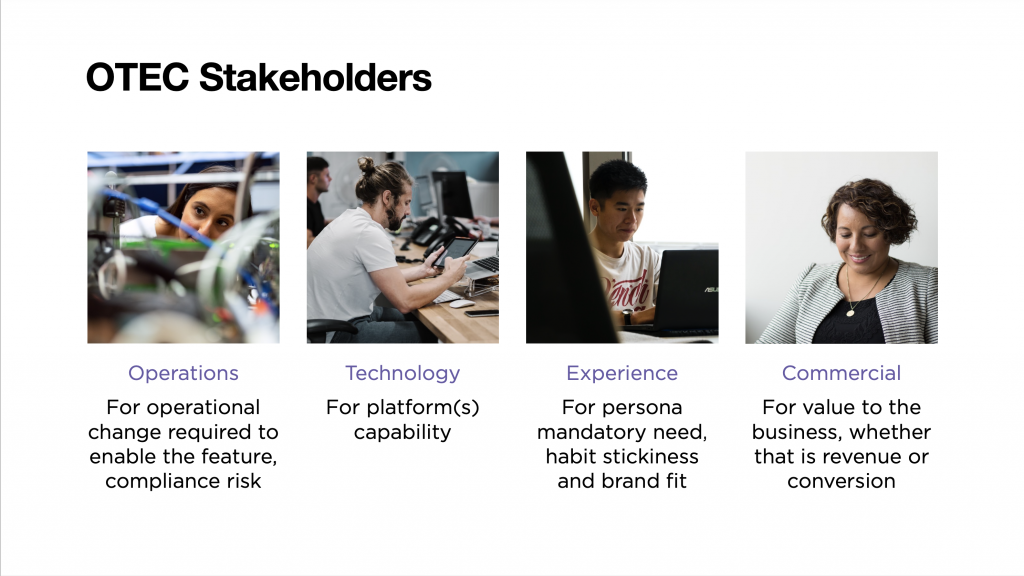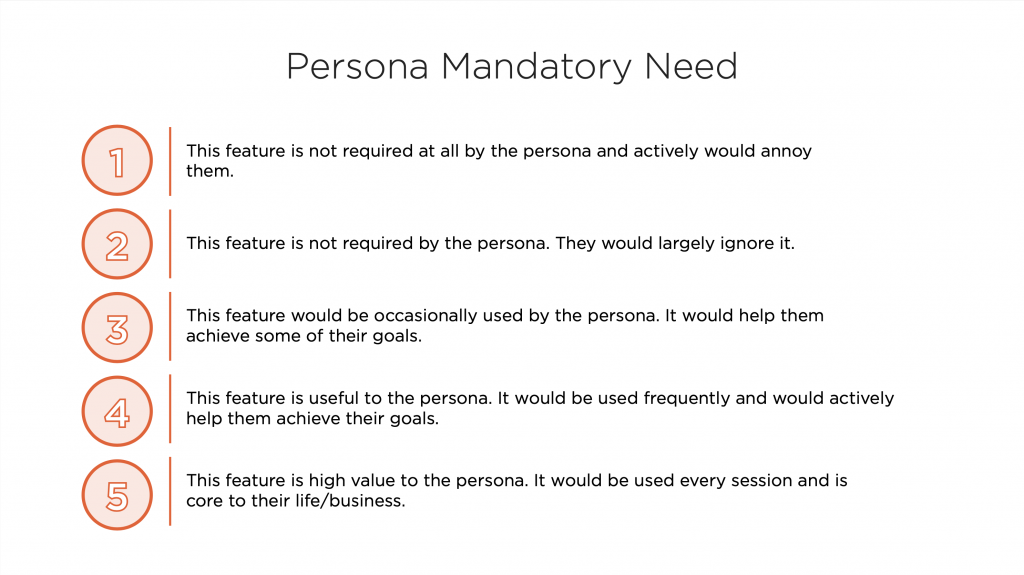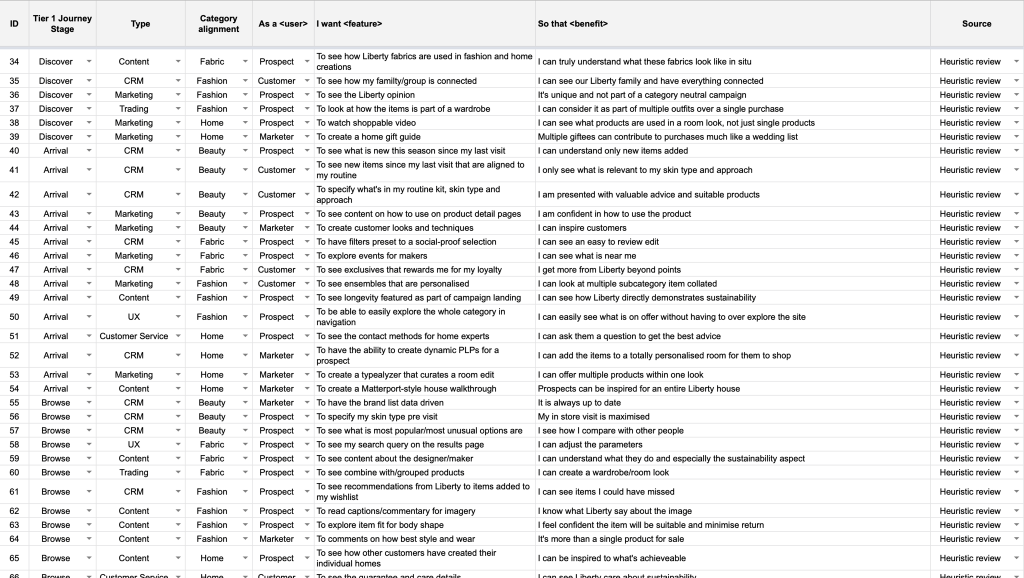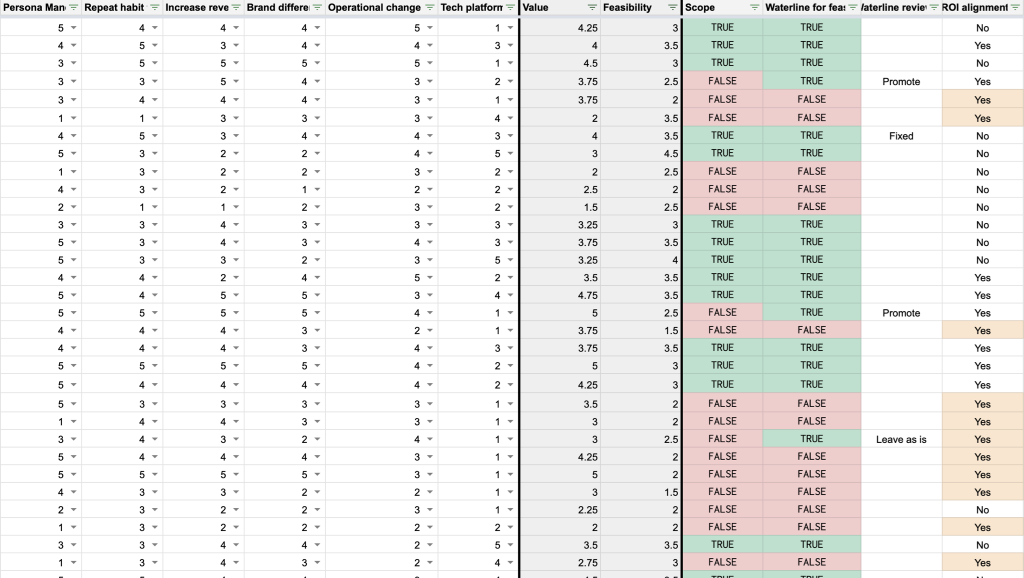
How do we prioritise our requirements?
Methodology
Many organisations have a ‘them’ and ‘us’ attitude. Them being IT, often universally disliked for saying no or feeling pessimistic. It can lead to feelings of mistrust and annoyance, at best. At worst, individuals will find a way of getting things done even if that means dreaded ‘campaign microsites’ – the best news for agencies.
When considering prioritisation, it shouldn’t be owned purely by IT, aligned to build and release plans. It should take more parameters into consideration, enabling different scenarios to play out.
Let us look at the process in more detail:
- Assemble one single complete list of requirements, these could be a blend of specifics and epics, but all written as a story in the format: As a user, I want feature, so that benefit.
- Review your RACI to identify who (or teams) should be responsible for
- Operations
- Technology
- Customer Experience
- Commercial
3. Brief those individuals on how to score each requirement, using their own crib sheet
4. Process the scores to understand the sweet spot of requirements and those which need a discussion – the waterline
5. Playback the finding to the entire team, helping develop the ‘why’ an item is now in scope for a roadmap, over IT selecting it.
Outcome
The most significant that cannot be understated is the change in hearts and minds. If requirements to date have been a black box, where no one in the business truly understands who decides what gets done, then this will feel refreshing.
Enabling the organisation to see how a combination of valuable and feasible requirements come together to be auto-selected as priority removes politics or pet projects.
The method enables the following value lens to be specifically set:
- Value to the customer
- Value to the organisation
- Alignment to organisation brand strategy
- Habit-forming/high frequency
And for the feasibility lenses:
- Organisation capabilities
- Technology capabilities
- Compliance fit
Timeline: 4 weeks
- 1 week – stakeholder identification and briefing
- 2 weeks – scoring by individuals
- 1 week – processing, analysis, and playback





A collaborative approach to requirements prioritisation
Balance value with feasibility for all stakeholders to understand
Prioritisation & Roadmap
How do we prioritise our requirements?
An organisation’s most significant transformation is involving stakeholders in the prioritisation process – often the most political and black box of activities. Change your methodology and tools to enable prioritisation all stakeholders can buy into truly.
How do we know where to differentiate?
You could feel like there are a million tasks on the to-do list, worrying if any of them will really make a difference in helping the organisation stand out and be famous. Put your brand values to work.
How can we plot a roadmap?
Sharing a plan can be the most important tool in enabling everyone in the organisation to understand what is being done, why, and importantly when. The work never stops – and that includes communicating.